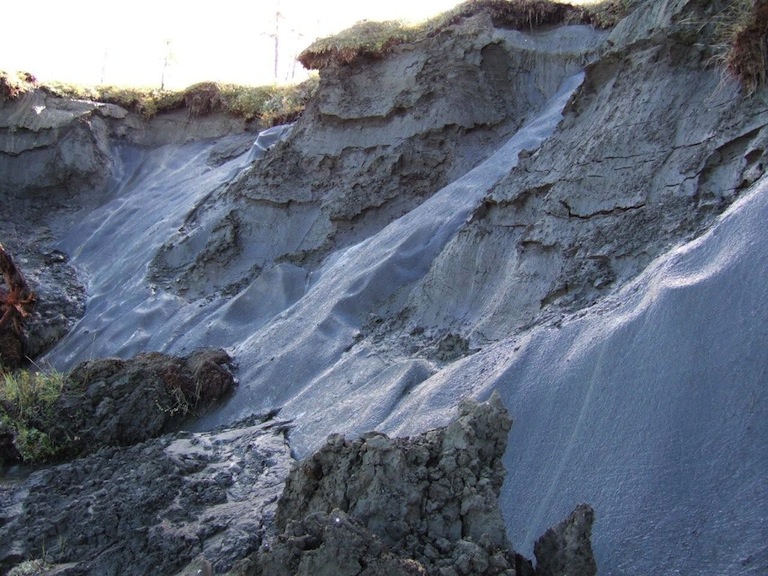The following section displays various ground ice types common to permafrost landscapes. For surface and seasonal features, see Surface Features Section. Hover over figures for image credit.
Tabular Ice: forms horizontally in isolated areas when water migrates through ground pores to the ice during the freezing process.
Ice Wedge: forms in a ground fracture, freezing and expanding during consecutive winter seasons. Wedge tip points downward, expanding at the upper ground surface.
Cave Ice: Ice crystals formed within a cave system because of the surrounding freezing permafrost conditions.
Talik: an area of unfrozen ground surrounded by permafrost. Forms because the precise area has physical inconsistencies in comparison to the adjacent environment.
Relict Ice: ground ice formed in the distant past, surviving to the present. (Right: 740,000 year of ice; oldest ice in North America found in central Yukon)
Yedoma Ice: permafrost sections in Siberia contain Pleistocene Era (2.6million-11.7thousand years before present) deposits with vast quantities of organic carbon. Thawing of this specific permafrost deposit would release extensive quantities of carbon dioxide into the atmosphere.
Definition information provided by the following sources: United States Permafrost Association (2013), Britannica (2013), Pidwirny (2006) and The Polaris Project (2012).
References
Permafrost Links
Material on this page was provided by Maren Pauly, Department of Geography, University of Waterloo
Last updated on 06/11/2017








